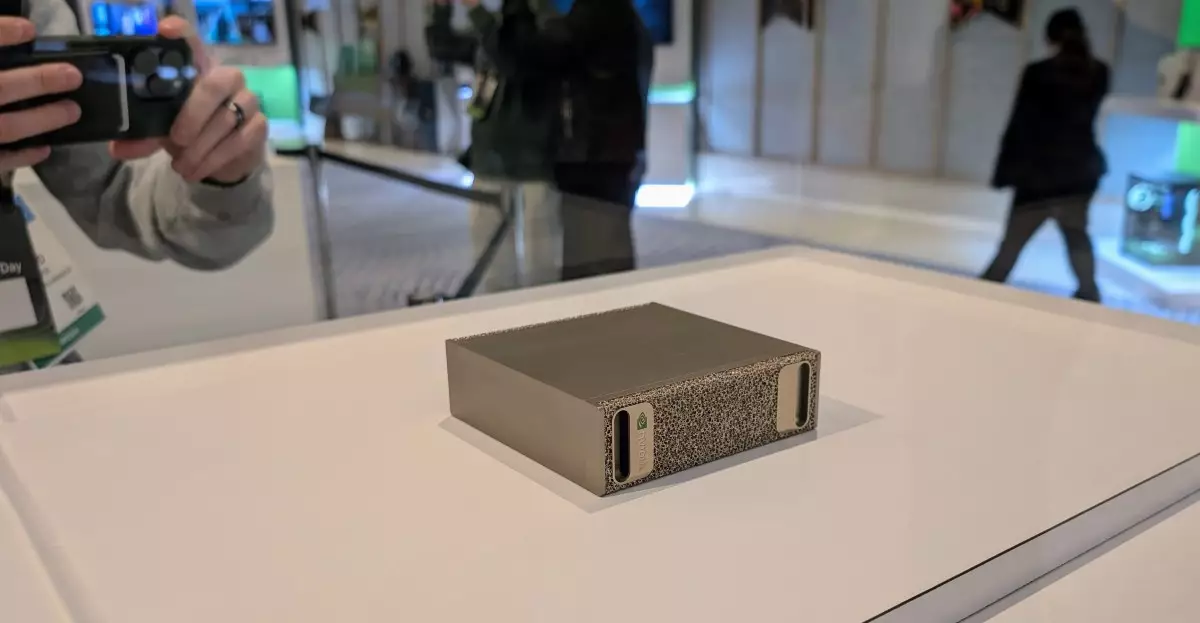In an age where artificial intelligence (AI) continues to reshape industries, Nvidia is at the forefront of this transformation with its groundbreaking Grace Blackwell platform. As the demand for AI capabilities soars, tech giants such as Asus, Dell, and HP have stepped up to create their own supercomputers powered by this innovative platform. This move signals a pivotal moment in the realm of computing, where the lines between traditional PCs and supercomputers blur.
Nvidia recently showcased its own version of a personal AI supercomputer, and in a strategic departure, it has opened the gates for third-party manufacturers to develop their alternatives. This approach not only reinforces the importance of adaptability in technology but also enhances the competitive landscape, providing a variety of options for consumers and enterprises alike.
Asus: Setting the Stage with the Ascent GX10
Asus has emerged as a pioneer in this new wave, unveiling the Ascent GX10, a mini PC that packs a punch with identical specs to Nvidia’s DGX Spark. With an impressive AI performance of 1,000 AI TOPS and 128GB of unified memory, the GX10 seeks to carve its niche in a market that demands versatility and efficiency. The design, which boasts a more consumer-friendly aesthetic compared to the sleek, metallic makes of its predecessor, reflects Asus’s strategy to reach a wider audience—a move that could potentially pay off in increasing consumer appeal.
However, the lack of preorder options and price disclosure raises questions about Asus’s market readiness. In an ambitious tech landscape, price and availability are crucial factors that can either bolster or diminish consumer interest. Without these details, it’s challenging for potential buyers to gauge the value of investing in such advanced technology.
HP’s ZGX Nano AI Station G1n: A Premium Option
Following closely, HP has teased its GB10 variant, the ZGX Nano AI Station G1n. Marketed as a more premium option, its sleek design is reminiscent of the Z2 mini workstation, making it an attractive prospect for businesses aiming for both aesthetics and performance. This focus on design indicates HP’s understanding of the market’s needs, where a balance of functionality and visual appeal can be the difference between a sale and a missed opportunity.
Moreover, the ZGX’s capability to fit into standard server racks highlights its practicality for enterprise applications. As companies continue to prioritize space and efficiency in their data centers, such considerations can set multiple products apart in a crowded field. However, HP also faces the challenge of aptly communicating the features and benefits of its offerings without falling into the trap of overengineered jargon that can alienate uninformed consumers.
Dell’s Minimalist Approach: The Pro Max With GB10
Dell, on the other hand, has presented a no-frills approach with its `Pro Max With GB10` model. While some may appreciate the simplicity of its design, it raises concerns regarding the practicality of its fit within server environments. A power button located on top could be seen as a design flaw, particularly for server racks where ease of access is paramount.
Dell is also poised to release a secondary option with the Pro Max GB300, which promises to deliver 20 petaflops of AI performance. With such staggering capabilities, this model positions Dell as a serious contender in the high-performance computing space. Yet, the arbitrary deadline of “early summer 2025” casts a shadow of uncertainty over its release strategy and aligns poorly with the immediate demands of the market.
The Future Ecosystem: Lenovo’s Anticipated Entry
With Lenovo expected to join the fray by developing its GB10 mini-computer, the landscape is brimming with possibilities. Each manufacturer has an opportunity to differentiate themselves, either through innovative design, pricing strategies, or value-added features. However, the question remains: will these companies be able to sustain momentum in a rapidly evolving tech environment?
Investors and consumers alike will keenly watch to see how these supercomputers perform in real-world applications, and whether they can withstand the heat generated by the AI revolution. The looming specter of competition compels these manufacturers to innovate continually, ensuring that what they bring to market not only meets but exceeds the expectations of a highly discerning audience.
The advent of Nvidia’s Grace Blackwell platform marks more than just another technological advancement; it represents a transformative shift in how we perceive computing capabilities in the age of AI. As Asus, Dell, HP, and others step into this new world, they carry the weight of expectation not just in terms of performance, but also in redefining user experience in an increasingly complex technological landscape.


Leave a Reply